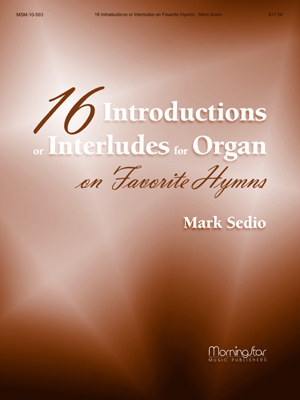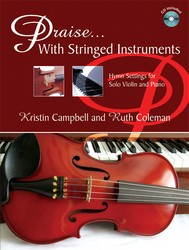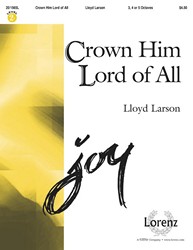- |
User Links
Longing for the House of God

Lord of the worlds above
Author: Isaac WattsPublished in 495 hymnals
Printable scores: PDF, MusicXMLAudio files: MIDI
Representative Text
1 Lord of the worlds above
how pleasant and how fair
the dwellings of thy love,
thy earthly temples, are!
To thine abode
my heart aspires,
with warm desires
to see my God.
2 O happy souls that pray
where God appoints to hear!
O happy men that pay
their constant service there!
They praise thee still;
and happy they
that love the way
to Zion's hill.
3 They go from strength to strength
through this dark vale of tears,
till each arrives at length,
till each in heaven appears:
O glorious seat!
When God our King
shall thither bring
our willing feet.
Source: CPWI Hymnal #735
Author: Isaac Watts
 Isaac Watts was the son of a schoolmaster, and was born in Southampton, July 17, 1674. He is said to have shown remarkable precocity in childhood, beginning the study of Latin, in his fourth year, and writing respectable verses at the age of seven. At the age of sixteen, he went to London to study in the Academy of the Rev. Thomas Rowe, an Independent minister. In 1698, he became assistant minister of the Independent Church, Berry St., London. In 1702, he became pastor. In 1712, he accepted an invitation to visit Sir Thomas Abney, at his residence of Abney Park, and at Sir Thomas' pressing request, made it his home for the remainder of his life. It was a residence most favourable for his health, and for the prosecution of his literary… Go to person page >
Isaac Watts was the son of a schoolmaster, and was born in Southampton, July 17, 1674. He is said to have shown remarkable precocity in childhood, beginning the study of Latin, in his fourth year, and writing respectable verses at the age of seven. At the age of sixteen, he went to London to study in the Academy of the Rev. Thomas Rowe, an Independent minister. In 1698, he became assistant minister of the Independent Church, Berry St., London. In 1702, he became pastor. In 1712, he accepted an invitation to visit Sir Thomas Abney, at his residence of Abney Park, and at Sir Thomas' pressing request, made it his home for the remainder of his life. It was a residence most favourable for his health, and for the prosecution of his literary… Go to person page >Text Information
| First Line: | Lord of the worlds above |
| Title: | Longing for the House of God |
| Author: | Isaac Watts |
| Meter: | 6.6.6.6.4.4.4.4 |
| Language: | English |
| Notes: | Spanish translation: See "De Mundos Creador by George Paul Simmonds |
| Copyright: | Public Domain |
English
- A Book of Hymns for Public and Private Devotion (15th ed.) #16
- A Book of Hymns for Public and Private Devotion. (10th ed.) #16
- A Choice Collection of Hymns, and Spiritual Songs, designed for the devotions of Israel, in prayer, conference, and camp-meetings...(2nd ed.) #85
- A Choice Selection of Psalms, Hymns and Spiritual Songs for the use of Christians #637
- A Church Hymn Book: for the use of congregations of the United Church of England and Ireland #140
- A Church of England Hymn Book: adapted to the daily services of the Church throughout the year #321
- A Collection of Evangelical Hymns #CLXXI
- A Collection of Hymns #40
- A Collection of Hymns Adapted to the Use of the Methodist Episcopal Church #d354
- A Collection of Hymns Adapted to the use of the Methodist Episcopal Church Including the Whole Collection of the Rev. J. Wesley #ad354 10 shown out of 300
Welsh
Notes
Lord of the worlds above. J. Watts. [Psalms lxxxiv.] First published in his Psalms of David, &c., 1719, in 7 stanzas of 8 lines, as the third version of the 84th Psalm. In addition to its use in its full form, there are also several arrangements of the text, the more important being:—
1. That in the Wesleyan Hymn Book, 1875, and many others derived from the same source. This appeared in the Wesley Psalms & Hymns, 1738 ; the enlarged ed. of the same, 1743; and the Wesleyan Hymn Book, 1780. It is very popular.
2. A cento composed of stanza i., iii., iv., and vii. This was given with alterations in Whitefield's Collection, 1753; Madan's Psalms & Hymns, 1760; Toplady's Psalms & Hymns, 1776, and thus into the hymn-books of the Church of England. In some modern collections, as Sarum, 1868, and Thring's Collection, 1882, some of these alterations are still retained. Usually, however, the text is correct.
3. Other arrangements are given in many modern hymnals, the construction of which may be tested by reference to Watts's Psalms. It will be found that in most cases the original text is retained.
As a paraphrase this ranks amongst the best by Watts. The metre is an imitation of that employed for the first time by John Pullain, in his Version of the 148th Psalm in the English Psalter, 1560.
--John Julian, Dictionary of Hymnology (1907)
Tune
DARWALLComposed by John Darwall (b. Haughton, Staffordshire, England, 1731; d. Walsall, Staffordshire, England, 1789), DARWALL'S 148TH was first published as a setting for Psalm 148 in Aaron William's New Universal Psalmodist (1770) with only soprano and bass parts. The harmonization dates from the ninete…
ST. GODRIC


 My Starred Hymns
My Starred Hymns







